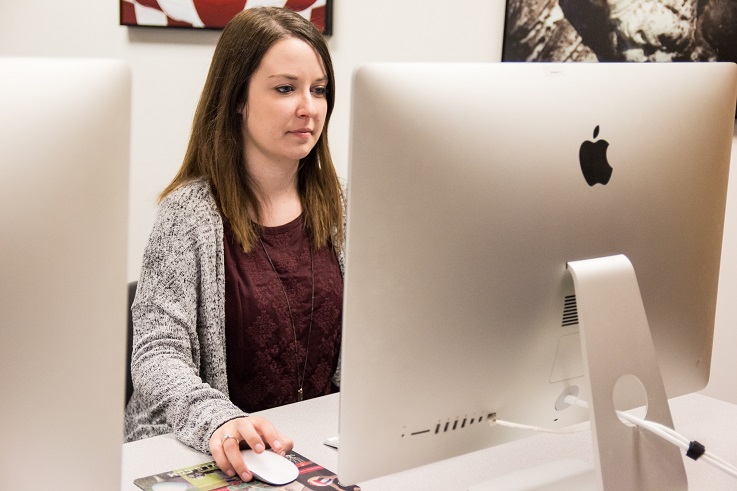Graphic Design Career Spotlight: Creative Director

Having a vision for how one’s career will progress over time, is an important part of long-term career planning. For graphic designers, one of the most coveted senior positions is a creative director. Creative directors earn upwards of $140,000 per year, according to Glassdoor.com.
While this role may not be right for everyone, understanding this position — its responsibilities and required skill sets — is helpful to anyone in the graphic design field. Knowing this will guide those who aspire to be creative directors to meet their goal through informed career choices and may inspire others to consider pursuing a career as a creative director.
Daniel Scrivner, an award-winning creative director, explains what this position means to him in his interview with Medium. “At its core, the job is to understand the problem you’re trying to solve, assemble an incredible team to tackle that challenge, and ensure they build on top of each other’s best ideas. If you can do those three things you can do great work. The role in the end is much more selfless and service oriented than it is crazy mastermind.”
In an agency setting, creative directors typically lead other creatives such as graphic designers, writers, illustrators, photographers, etc. but also intersect with strategists and data scientists to inform their creative work. Creative directors have a thorough understanding of advertising, marketing, business strategy and sales and often work directly with clients to present their creative work.
While there isn’t a single right way to become a creative director, many start out with a bachelor’s degree in a creative field and work their way up, honing various skills throughout their career. The mostly commonly noted skills required of creative directors include creativity, analytical thinking, leadership, management and interpersonal skills.
Developing these skills often means working alongside talented creative directors and learning from their feedback and supervision. It’s important to note that depending on the work setting, junior staff may not always have direct contact with creative directors right away. Instead, entry-level positions may be initially mentored by associate creative directors. In this situation, it may take a few years before you advance to a more senior position such as a senior graphic designer. At that stage, you’ll have more freedom in leading creative projects with minimal oversight. You may even supervise junior designers. Most importantly, you’ll begin to develop your own creative style, allowing you to give something of yourself in each project.
From there, it may not be long before you’re promoted to associate creative director. This position reports directly to the creative director and includes a fair amount of “non-creative” work associated with account management. You’ll be trusted to make important decisions regarding client accounts and will attend client meetings. While both positions include creative and “non-creative” work, creative work remains the primary focus for an associate creative director. For this reason, many prefer to stay in this position rather than be promoted to creative director.
At William Woods University, students earning a bachelor’s degree in graphic design gain strong foundational design skills that allow them to work their way up and advance through their career. Also, courses such as ART 432 – Real Word Graphic Design Studio provide students with an opportunity to apply their design skills by working with actually community clients.

